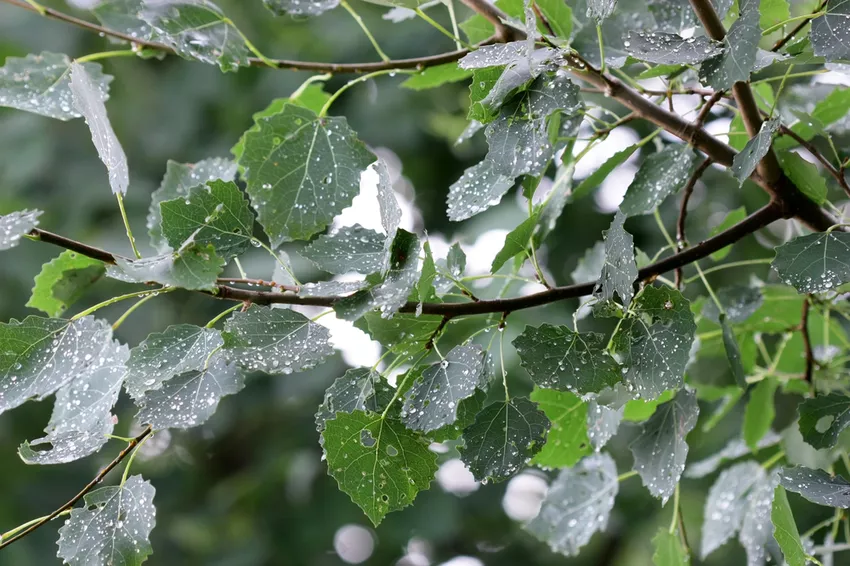- A medium-sized species of poplar
- Trembling aspen leaves
- Kitty Blossoms
- Undemanding, soil-improving and biodiversity-promoting
They are among the most commonly represented poplar species in our latitudes and play a key role in shaping the local, familiar landscape. You can find out everything you need to know about the aspen in the following short portrait.
 The aspen leaves trembling in the wind is pretty to watch
The aspen leaves trembling in the wind is pretty to watch
A medium-sized species of poplar
Within the genus Populus, there are between 22 and 89 species distributed throughout the northern hemisphere in temperate climates. The quaking aspen or aspen is a species of Populus that is common in Germany.
Within its genus, it is one of the medium-sized representatives. It grows between 20 and 35 m high - the total range of poplar heights is about 15 to 45 m.
In terms of habit, the aspen is very typical of the species: it grows with an upright, sometimes slightly inclined trunk and forms a high, elongated to conical crown, which typically gives off a very lively picture.
So, from afar, you recognize a full-grown aspen:
- A medium size
- A soft, elongated, large-crowned silhouette
- A swinging movement
Trembling aspen leaves
The aspen is known for its quivering foliage. The reason why the leaves can so easily be swayed up and down by the wind is partly due to their very long stem, which is flattened on the underside. On the other hand, the wide leaf blade also offers a relatively large surface to attack.
Depending on whether it grows on the long or short shoot, the foliage is rounded and wavy-edged or triangular and entire. In autumn the leaves turn a beautiful golden yellow.
Kitty Blossoms
Even before the foliage, the aspen forms catkin-shaped flowers. Like all poplars, it is dioecious, i.e. it has representatives with purely male or purely female flowers. Both pollination and seed dispersal are carried out by the wind. The ripening of the capsule fruits on the female catkins takes place from the end of May. Then you can see the seeds, equipped with a flight-helping fluff, flying through the air.
Undemanding, soil-improving and biodiversity-promoting
The aspen is one of the so-called pioneer trees because it does not hesitate to colonize rather unattractive fallow areas and clear cuts. It doesn't make any special demands on the soil. As if this frugality wasn't enough, it even contributes to improving the quality of the soil, because its fallen foliage is very nutritious and decomposes quickly.
The flowers of the aspen are also a valuable food source for butterflies.